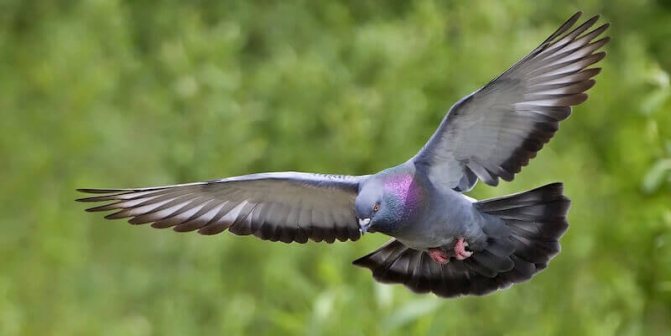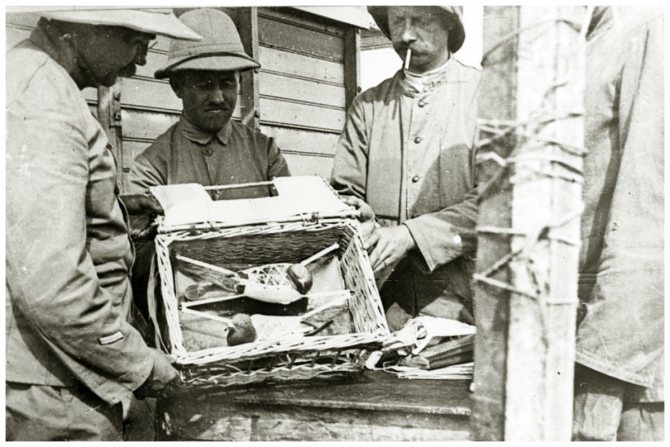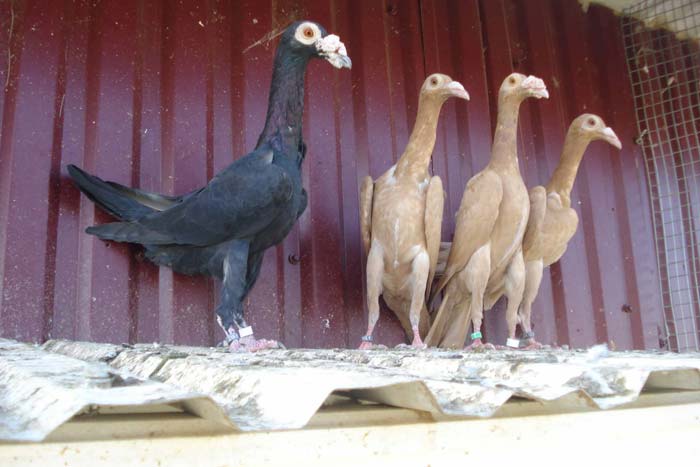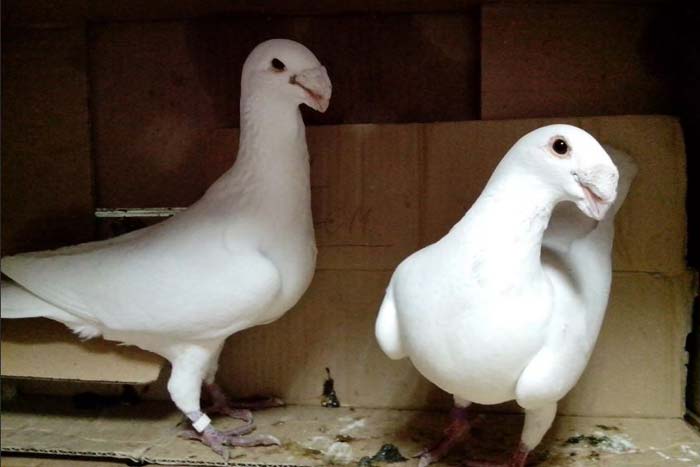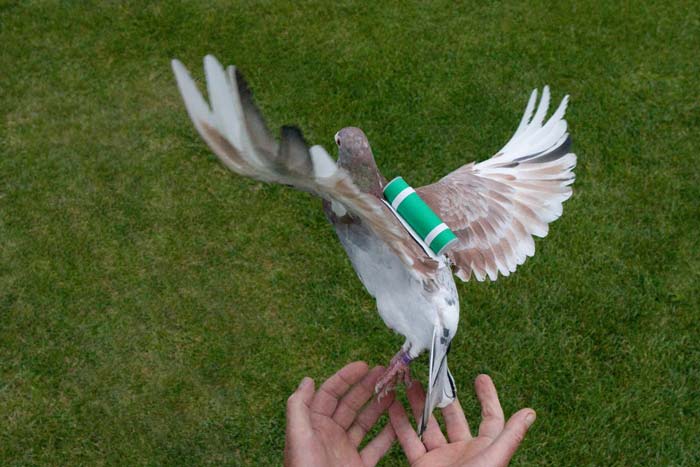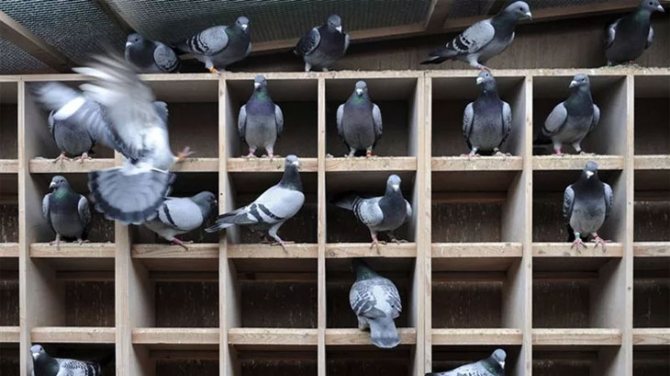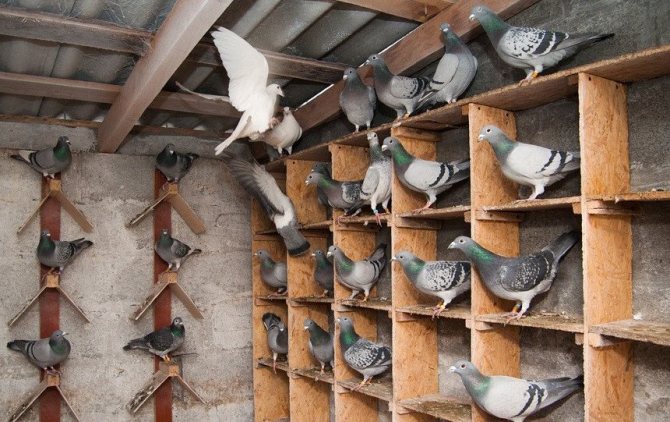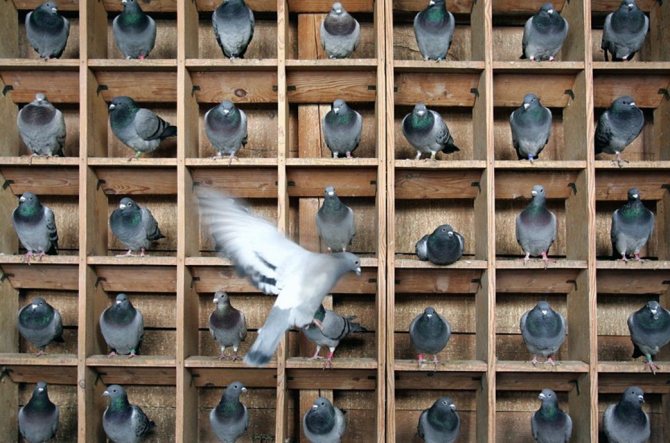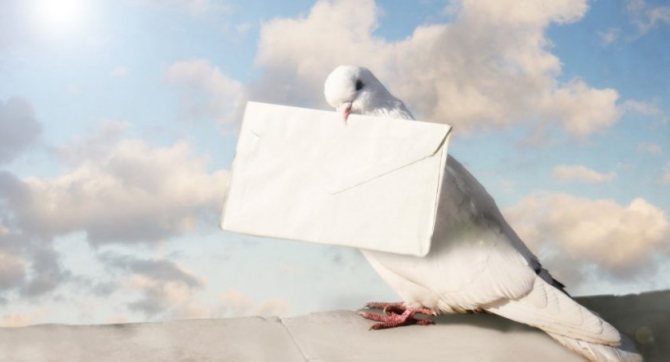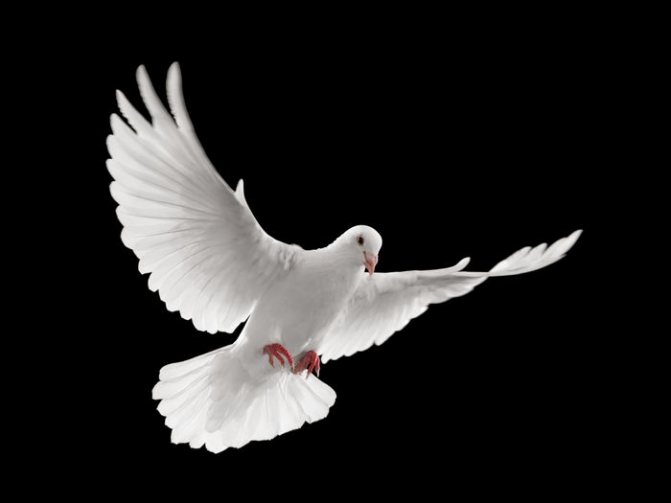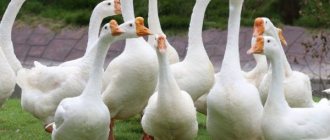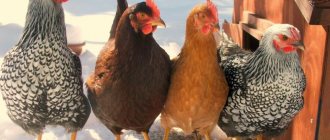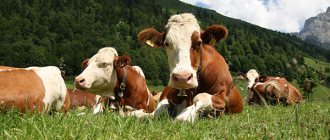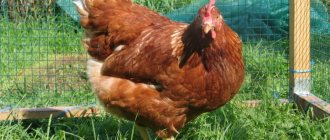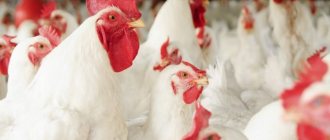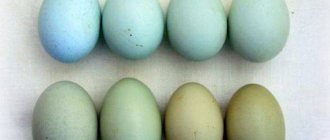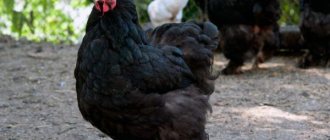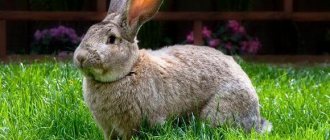Poultry »Pigeons
0
2075
Article rating
Homing pigeons have been bred for several thousand years. The ability to orientate in space in this species of birds was noticed a long time ago. The first post breeds began to emerge immediately after the meat breeds. Pigeon mail was used in ancient times, both in Europe and Asia. It did not lose its relevance until the middle of the twentieth century. Now these pigeons are considered sports and participate in competitions.

Carrier pigeons
The history of the origin of carrier pigeons
Historians found the first mention of carrier pigeons in Attic messages found on the territory of Roman, Greek, Egyptian and Persian settlements that existed long before our era. This type of communication was especially developed during the reign of Nur ad-Din in Egypt in 1146-1173: in those days, a pair of good birds cost 100 denarii. Later, with their merits, carrier pigeons won the favor of the people in 1572 (during the capture of Haarlem, the Netherlands) and in 1574 (during the capture of Leiden, South Holland).
Did you know? Hamsters and street pigeons have a lot in common: when there is no more room in the stomach, the birds fill their goiter with food, making supplies for the future. This "bag" is divided into two parts, so first the left part is filled with food, and then the right compartment.
Until 1832, "flyers" were used as liaisons between brokers, financiers and people involved in buying and selling securities on the market. In addition, at the beginning of the 19th century, the Dutch government also established a civil-military pigeon mail system, which used the birds that came to the islands of Java and Sumatra from Baghdad.
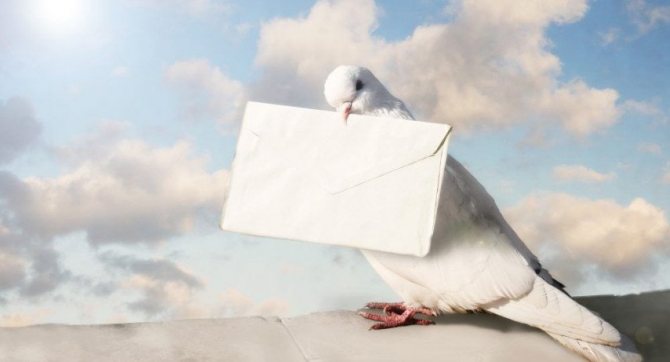

In the twentieth century, pigeons played a role in warfare during the First and Second World Wars, and were also used as postmen by reporters for the international news agency Reuters. They delivered letters faster than vehicles, for which they were appreciated not only by foreign, but also by domestic correspondents.
Check out such an unusual breed as the pink pigeon.
Today, representatives of various breeds of carrier pigeons are used only in the organization of sports competitions: for example, in 1996 in Slovakia, pigeons dedicated to the Summer Atlantic Olympics were released. They are also bred by enthusiasts who value birds for their dedication to home and attractive appearance.
"Pigeon military service in the USSR"
Contrary to all forecasts, modern means of communication have failed to push the pigeon mail to other remnants of the past. Moreover, during the Great Patriotic War in the USSR, birds were actively used in reconnaissance operations and for the delivery of important dispatches until 1945. The first prerequisites for using carrier pigeons in public service appeared much earlier - in 1928. Even then, at a meeting of the Council Labor and Defense was put to a vote on the draft "military-pigeon duty". In 1929 it was approved by the order "On the adoption of the pigeon communication system for the armament of the country", and a year later developed the first of its kind guidance on combat training for military pigeon breeding units. With the outbreak of hostilities, control over the feathered postmen was greatly tightened.According to a government order, all pigeons were to be removed and destroyed from the population as an illegal means of communication. Those who refused to comply with the order were tried according to the laws of wartime. It should be noted that the cover-up carried a double threat. During the German occupation, the identification of birds was threatened with immediate execution, since the Germans were afraid that the birds would be used in partisan warfare.
How do carrier pigeons determine where to fly?
According to scientists, pigeons have a special instinct that allows them to accurately find their way home. The mechanism of "homing" is not fully understood, but there is an assumption that low-frequency infrasonic waves, which are inaccessible to human hearing, help birds to navigate in space. From this point of view, pigeons know where to return to, thanks to the "sound" of the landscape, since every object on the surface of the Earth has its own frequency. The results of ornithological studies have shown a very complex structure and development of the pigeon brain.


Its principle of operation can be compared to a small computer capable of reading, processing and storing large amounts of information. The sources of the obtained data are all the bird's senses, but especially the eyes. Their structure allows you to filter out unnecessary objects and focus only on the main objects, which remain in the memory. It turns out that the pigeons return home according to a map created in their heads, which is supplemented by personal impressions of flying over a specific area: the birds always understand where they are approximately and in which direction to fly next.
Another interesting feature of pigeons is the presence of a kind of "receptor magnet" on the beak, thanks to which even a newly born chick knows how to determine the strength of the magnetic field on the Earth's surface, and, in particular, near its own nest. The read out information is forever stored in memory and also helps the bird in search of the way home.
Find out why pigeons nod their heads when they walk.
This feature works regardless of the breed, although in decorative species these "skills" are not as developed as in sports pigeons. If you look at what distance carrier pigeons can fly, then, according to studies, most birds could not overcome more than 1100 km. Therefore, the closer the addressee and the addressee are to each other, the more chances they have to establish a communication system without thinking how long their pigeon can fly.
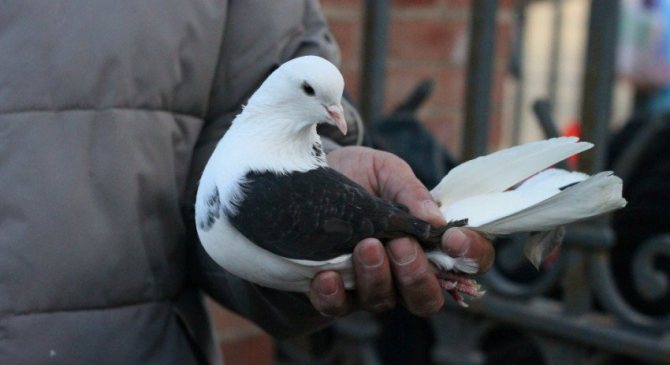

The history of pigeon mail from Antiquity and the Middle Ages
The pigeon mail has already been 5,000 years old. These clever birds have brought millions of letters, thousands of people have been saved, dozens of feats have been accomplished. The pigeons were awarded orders, showered with various honors. Even the ancient Romans, Greeks, Jews, Persians noticed the amazing ability of these birds to find exactly the way from their home to any desired point on the planet. Trained birds managed to return home, even being taken away in a state of anesthesia for hundreds of kilometers. That is why many contemporaries are interested in pigeon mail, how pigeons were taught, the principle of work.
The amazing ability to return from distant lands to their native nest was noticed long ago. Pigeon mail is considered the most ancient form of transmission of messages over a distance using birds. The first mentions of such a method of transmitting information were found in the Old Testament. It was Noah who released a dove from the ark in order to check the presence of land on the globe.
The principle of pigeon mail was used by the Chinese, Gauls, Germans. During the Gallic War, Caesar sent messages to his supporters in Rome. For this, it was the mail with pigeons that was used. Pigeon mail at the state level was created in Egypt and Syria by decree of Sultan Nureddin.In 1167, he ordered the construction of many post-pigeon towers. It was the golubegram that informed the Sultan in 1249 that the crusaders had invaded Egypt.
Characteristics of rocks
Among the many known breeds of carrier pigeons, only a few are among the most popular:
- Russians;
- German;
- English;
- Belgian;
- Czech.
Each variety has its own unique characteristics.
Russians
Representatives of this breed of pigeons are widespread in Russia. They are distinguished by their attractive appearance with graceful body lines. The legs and neck are long, the head is small, with a sharp beak and orange-red eyes, with a white border. On the outstretched wings and tail there is a bend that helps the birds to maneuver during flights. The legs of Russian pigeons are elongated and completely bald. The main color of plumage is white, although variegated individuals are sometimes found.
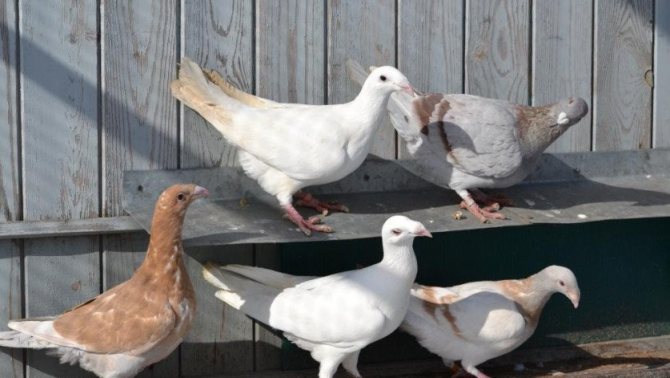

German
The ancestors of this species of carrier pigeons are representatives of the English and Dutch breeds, from which the abilities for fast flight and for no less rapid growth and development were transmitted to the birds. With a relatively small body size, the neck of German pigeons is distinguished by an increased length. The head is medium, but the beak on it is greatly shortened and has a characteristic outgrowth that covers it almost to the very tip.
Did you know? The first association of breed lovers was created in Leipzig (Germany) back in 1905, but already at that time they could be called more decorative than postal.
From the outside, it may seem that the bird has a humped nose and no beak at all. In addition, birds also have a shortened tail, although the wings are medium in size and fit tightly to the body. Legs are long and, apart from red toes, densely feathered. The color of the plumage can have a wide variety of shades, but in most cases it is:
- pure white;
- gray;
- brown;
- reddish;
- yellowish.


If the owner is interested not only in the flight qualities of the birds, but also in how they look, then you should pay attention to the German pigeons.
English
The pigeons, which are most suitable for modern breed standards, were bred in the middle of the 19th century and since that time have been actively bred in many private dovecotes. It looks easy to confuse them with ordinary yard birds, but they still have some characteristic features of the exterior. The ancestors of English pigeons were bred in the XIV century, but since that time their appearance has undergone a lot of changes.
Read more about what you can and cannot feed pigeons at home.
The head of the birds is small, the body is large, with rigid plumage. The eyes are large, one might say, even larger than those of other pigeons, they have eyelids. The beak is straight, thick, with characteristic growths resembling warts. Legs are of medium length, partly feathered. The color of the plumage has several variations and can be bluish, variegated, white or black. Sometimes there are chestnut and almost yellow pigeons.
Belgian
Representatives of this breed are also considered one of the old "postmen", the characteristics of which were improved in the 19th century by crossing with pigeons of the Homer and Turbit breeds. The body of the "Belgians" is distinguished by its rounded shapes, but the main distinguishing feature of the breed is the well-distinguished chest part. The neck and head are medium in size, the legs are short.


The tail is narrow, with few feathers. The wings fit tightly to the back and are distinguished by a shortened structure of feathers. The color of the plumage can be very diverse: from gray and gray to red, black, brown and even yellow.
Czech
Czech pigeons do not fly long distances, but many consider them to be the best messengers. They have an excellent appearance and are distinguished by good obedience, due to which they are often presented at all kinds of exhibitions.These birds have a long neck, a short tail and a relatively long beak with a bump.


The head is medium in size, the plumage is smooth and tight to the body. The legs are massive, the wings are long (the flight feathers reach the base of the tail). The plumage color can vary from pure white to grayish and even reddish.
Important! Compared to other "postmen", Czech pigeons require more physical activity, as they are much more active.
German representatives
As a result of long work, German breeders bred their own breed of postmen. Dutch and English pigeons were taken as the basis for breeding the German breed. Scientists wanted to bring out a precocious, handsome and handsome man capable of flying quickly. The result is a compact bird with a short beak and long neck. Her legs are long, her tail is shortened, and her eyes are widened. This breed has a different color of plumage - from white to brown, gray, yellow, red. Such pigeons can be seen at various exhibitions in Germany.
Growing carrier pigeons at home
In terms of care, carrier pigeons are not too different from their relatives of other breeds, but the owner needs to know about some of the features of their maintenance and breeding.


Conditions of detention
Like many other pets, pigeons need a warm and dry home, with regular meals and the ability to walk. Different dovecotes may differ in individual design features, but in any case, they must meet the following requirements:
- Stocking density - at least 0.5 m² for one pair of birds, and before placing the pigeons, it is advisable to pre-divide the room into separate sections with built-in cells of sufficient depth (approximately 20 × 40 cm).
- Features of doors and windows for the departure of birds. For a person, a passage with a height of 150–180 cm and a width of 55–70 cm will be enough, but it is advisable to make the door itself double: from the outside it should be a solid wooden or metal sheet, and from the inside - a lattice or mesh. The latter option (lattice doors) is great for the summer season. The size of the windows for birds depends on the breed, but on average it does not exceed 25 × 20 cm (in each compartment there should be at least two such holes, at a height of at least 11.5 m from the floor surface).
- It is better to make the floor in the room from densely laid boards., which, to protect against moisture, are raised above the bottom of the dovecote to a height of at least 25 cm.
- The roof of the dovecote can be of two types: single-slope and dual-slope, but necessarily covered with roofing material or protected from moisture in another way (the most convenient roof slope is considered to be a ratio of 1:10 in comparison with the overlapped area).
- Ventilation system. Usually it is represented by an inlet located at a height of 1.15 m from the floor (covered with a net), and an exhaust outlet (performed at the highest point of the roof). In both cases, such windows should close well during cold weather.
- Lighting. Before the competition or during the breeding season, daylight hours need to be increased to 16-17 hours a day, so additional light sources will have to be installed in the dovecote to compensate for its lack in the winter season.
- Temperature. Ideal for representatives of most breeds will be temperatures in the range of +20 ° C, decreasing in winter to +5 ° C. In extreme cases, zero temperature is allowed, but prolonged "minus" should be avoided if possible. To this end, you need to think in advance about the heating system and insulate the dovecote as much as possible with foam and mineral wool.
- Humidity. Ideally, this figure should not be less than 65%, so during the summer period, to increase the humidity inside the house, you can periodically water the roof with a hose with water.
- Feeders and drinkers. There are no special requirements for these products, the main thing is that all the pigeons are placed nearby and can get food. Usually, the products are made in the form of a long pallet with division into compartments using perches, between which each bird can stick its head and take food. Drinking bowls can be installed and purchased, for example, plastic, with the same divisions into compartments.
Important! When arranging the poultry house, do not forget to organize a take-off and landing site - from there the pigeons can take off and then land back before entering the dovecote. This could be a small piece of plywood or other sturdy material placed on the outside of the birdhouse.
Feeding
For good health and high activity, pigeons must receive food that provides them with a supply of vitamins and minerals. Each breed has its own nuances of the feeding process, which in the case of "postmen" are based on moderation. The birds should never get fat, but at the same time they should have the strength to overcome the required distances.
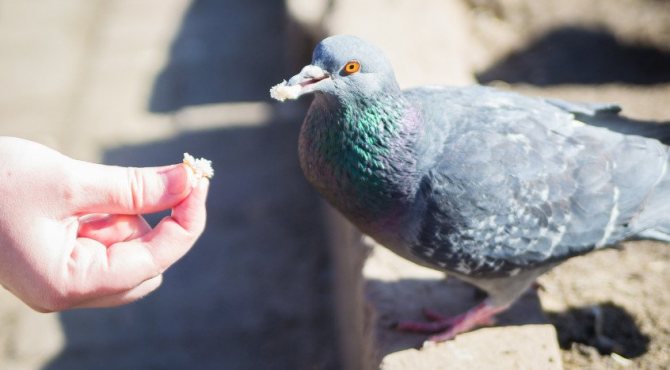

The main components of the diet of carrier pigeons in the summer can be:
- wheat, corn, oats (no more than 10% of the total amount of feed given out);
- peas (20%);
- vetch (10%);
- millet (20%);
- barley (20%).
In addition, in summer, young greens will be a very useful component of the menu. In the warm season, birds molt, so the diet should be with a sufficient amount of protein. Good sources of protein are barley, oats, to a lesser extent wheat, and rapeseed and colza can be used as additional feeding. Leaves of young cabbage are perfect for pigeons as a green mass. One individual eats about 40-50 g of different food per day, divided into 3 meals in the summer.
Did you know? When breeding pigeons, the owners use the marking of individuals with rings so that they can be distinguished from other people's birds.
In winter, the diet of carrier pigeons changes, due to the lack of greenery and the relevance of vitamin and mineral supplements. The amount of protein in the feed should be reduced to prevent possible unwanted egg-laying. Therefore, pigeons should not be given legumes, and barley and oats will help replace them. You can increase the nutritional value of feed with the help of cereals and potatoes. In a proportional ratio, the daily menu of "postmen" in the winter period will look like this:
- barley (40%);
- oats (40%);
- lentils (10%);
- crushed corn (10%).
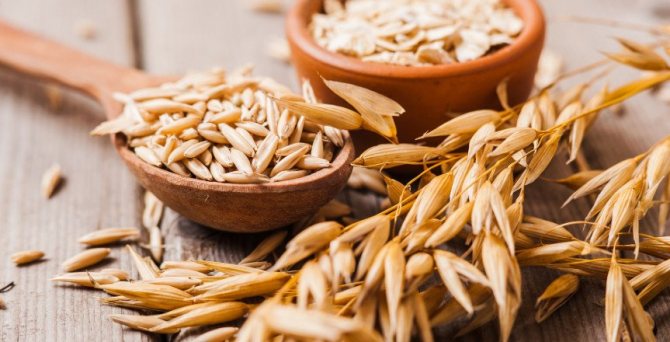

For the well-being of one individual, only 30-40 g of such a mixture per day will be enough, and if you want to maintain softness and improve the appearance of the plumage, you can add 3-4 g of flax or rapeseed to it. The number of winter feedings is reduced to two times: at about 8 am and 5 pm.
Important! At any time of the year, pigeons must have access to clean and fresh water.
Care and hygiene
The appearance of pigeons and their health largely depend on the observance of sanitary and hygienic standards in the poultry house. Ideally, a little cleaning should be done daily, sweeping up food and droppings from the floor, and a more thorough disinfection of the dovecote can be postponed until the end of the week.


General cleaning of the premises with disinfection of all surfaces should be performed 1-2 times a year, with the temporary relocation of birds to another dwelling (preferably before the onset of cold weather), and provides for the following actions:
- cleaning feeders and drinking bowls, their treatment with an alcohol solution of iodine or other disinfectant solution;
- cleaning from dust and further processing with a disinfectant of walls and ceilings;
- cleaning the floor with a complete replacement of the existing litter;
- whitewashing with lime with the treatment of all cracks and small depressions in the walls;
- disinfection of equipment;
- airing the room.
When all actions are successfully completed, you can return the pigeons to their previous place of residence - the main thing is that the dovecote is ventilated before that time and all surfaces are dry. If the birds even temporarily have nowhere to move out, then during the harvest they can stay indoors. However, in this case, instead of using a variety of special disinfectants, you will have to limit yourself only to whitewashing with lime. Drinking bowls and feeders can be disinfected by boiling several times a month.
Important! Covering the floor with a new clean bedding, it is advisable to pour wood ash, shredded tobacco leaf or dried wormwood under it, which will drive away parasites.
Soda dissolved in boiling water will also be a good option for cleaning, after using which you need to rinse the inventory again under clean running water. As for the birds themselves, for preventive purposes it is advisable to inspect them every day, mainly during meals. Healthy birds quickly swoop down on food, and sick birds sit sluggishly to the side with their head pulled into their shoulders and lowered wings. Of course, such individuals must be isolated immediately.


Bird training and training
Homing pigeons lend themselves well to training, which the owner cannot do without if he wants the birds to fly away from home and regularly return back. You can start the upbringing process from the age of four months, when the pigeon is completely covered with constant plumage. It is advisable to devote the first lessons to the study of the territory around the dovecote and only after several weeks of successful flights proceed to a more difficult task: returning home from long distances.
Important! To maintain the endurance of the "postmen", the time spent in closed baskets should be minimized. For this reason, experienced breeders try to move birds from place to place as quickly as possible.
In the first year of training, it is not recommended to take the bird further than 300 km from the house. Moreover, if the pigeon's route provides for a distance of more than 100 km, then the owner needs to include one day for the pigeon's rest in the flight plan. The most suitable time for training is the period from mid-spring to October, when the weather is warm and clear, with a light wind. Once the pigeon gets used to flying in these conditions, the task can be complicated by organizing training on a foggy or windy day.


If the first experience of such flights is unsuccessful, then you will have to exclude classes for several days so that the bird recovers and gains strength. Each success of the feathered should be encouraged by the owner, and further tasks only become more difficult. Pigeons will quickly get bored with the same instructions, and they will no longer obey, so at least once a month it is worth releasing the birds on a full route. It is advisable to release pigeons in the morning, when all the processes in their body correspond as much as possible to a productive activity.
The first Russian military dovecotes
The idea of using quick-witted birds to help Russian soldiers first occurred to Captain Arendt in 1873. The man served in the Pechersk Fortress as a parade-de-camp and at the same time was engaged in training pigeons, which he bought from city lovers or subscribed from abroad. The training of birds began early. From about three months old they were taught to use portable cages and were regularly transported farther from home, developing their orienteering ability. With proper perseverance, the birds quickly improved their flight skills and endurance, which allowed the best of them to fly for 12 hours without interruption. The average speed at the same time ranged from 80 to 100 km The idea turned out to be successful, and since 1891, official pigeon communication lines began to be established throughout the country. The first of them ran between Moscow and St. Petersburg.Others connected a number of large stations on the western and southern borders. Dragomirov's pigeon sport has gained particular popularity. He repeatedly initiated the winged postman competition, in an effort to determine the fastest breed. The first bird to set the record for range and speed of flight was the pockmarked carrier pigeon of the then famous Moscow pigeon breeder Domashkev. He managed to cover a distance of 537 km in six hours, developing an average speed of 86 km / h.
Disease prevention
Pigeons are characterized not only by purely avian diseases, but also by infections that can be transmitted to humans (for example, psittacosis or trichomoniasis). Therefore, any poultry house owner must adhere to the following preventive requirements:
- carry out regular cleaning and disinfection of the dovecote;
- use quality feed;
- withstand quarantine for new members of the bird family (at least 10 days);
- to make prophylactic injections against Newcastle disease (at 35–45 days), salmonellosis (3 times a year, by drinking the vaccine for 10 days), trichomoniasis (1 time in three months), smallpox (once a year);
- deworming birds (2 times a year);
- use vitamin and mineral supplements during the molting period, during increased loads or simply with the active growth of young animals (can be added to food once a week);
- use immunostimulating drugs (for example, "Nefrohep" or "Perpulmin").


Together, these actions will allow you not to think about ways to treat pigeons, and if the birds catch an infection, then their body will quickly cope with it. This applies to representatives of any breed, regardless of the conditions of its selection and requirements for keeping conditions.

